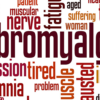Acupuncture Treatment for Joint Pain
Acupuncture, a key component of traditional Chinese medicine, involves the insertion of very thin needles through your skin at strategic points on your body. It's most commonly used to treat pain, including joint pain. Here’s how acupuncture might help with joint pain:
- Pain Relief: Acupuncture is believed to increase the release of endorphins, which are natural painkillers produced by the body. By stimulating the nervous system, acupuncture can help to change the way your brain perceives pain, thereby reducing joint pain.
- Anti-inflammatory Effect: Research suggests that acupuncture can lead to a reduction in inflammation. By targeting specific acupuncture points related to joint pain, it can help reduce inflammation and swelling around the joints, which is often a significant contributor to joint discomfort.
- Improved Circulation: Acupuncture may improve blood circulation to the affected joint, which helps in reducing pain and promoting healing. Enhanced circulation can help to remove toxins and bring in nutrients, which support the healing process of inflamed joints.
- Muscle Relaxation: Acupuncture can help relax tense muscles, which might contribute to joint pain or exacerbate it. By relieving muscle tension around joints, acupuncture can improve mobility and reduce pain.
- Regulation of Neurotransmitters: Acupuncture may affect the regulation of neurotransmitters and hormones such as serotonin and dopamine, which can influence pain perception and promote a sense of wellbeing.
- Modulation of the Immune System: Some evidence suggests acupuncture can modulate the immune system, potentially playing a role in reducing the chronic inflammation associated with some types of joint pain, such as rheumatoid arthritis.
Decicco Acupuncture manages pain through a combination of biological mechanisms, including the stimulation of nerve endings, which alters pain perception; the release of endorphins, the body's natural painkillers, which decrease the feeling of pain; improved blood flow, which aids in healing and reduces discomfort; reduction of inflammation, a key contributor to pain; relaxation of muscle tension to alleviate stiffness and spasms; and the regulation of neurotransmitters, which can help balance the body's response to pain. Through these actions, acupuncture provides a holistic approach to pain relief, targeting both the symptoms and underlying causes of pain.






